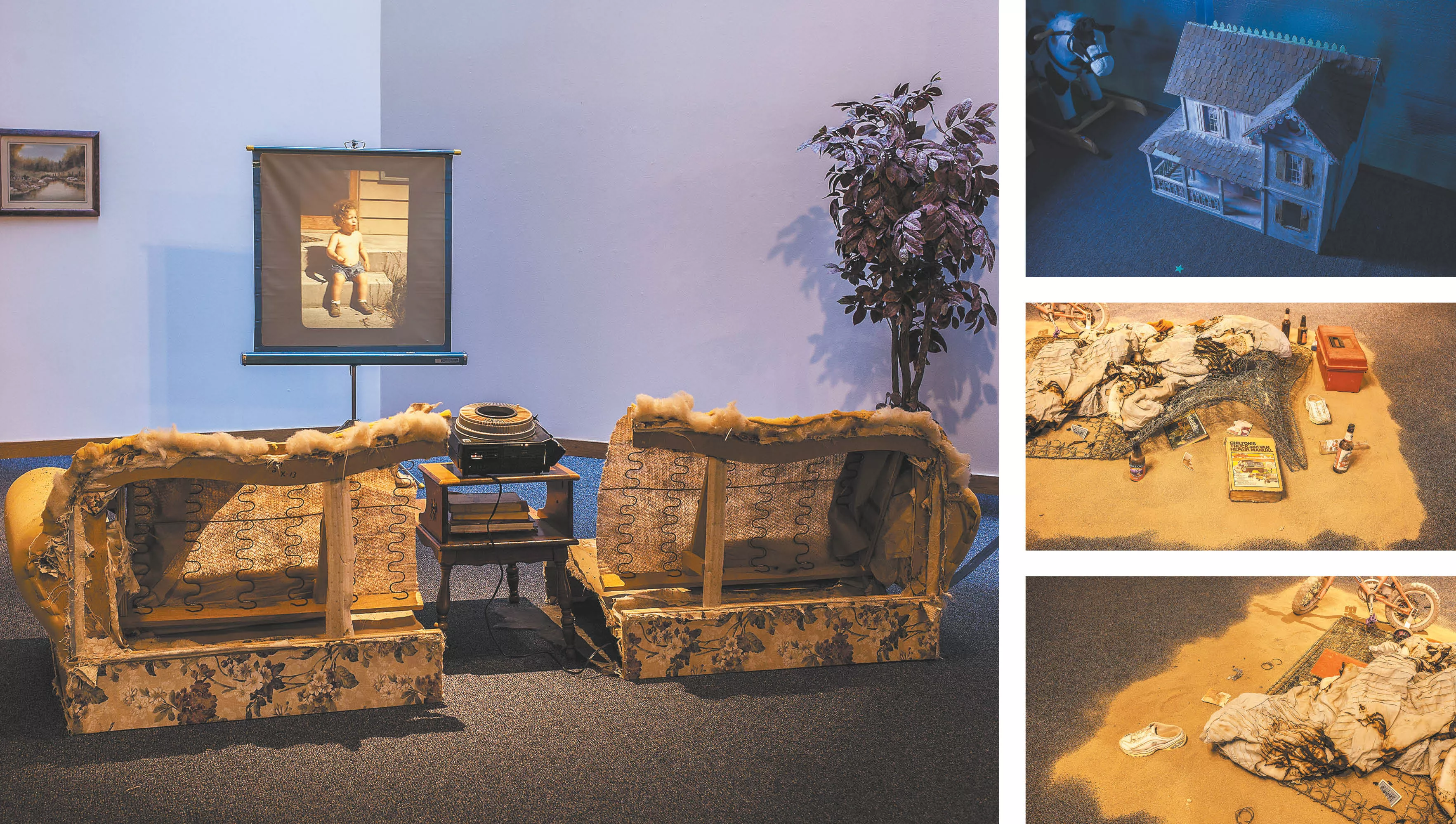
Julie Gautier-Downes works with ghosts, both her own and in the stories she tells through her photographs and installations. With titles like "Scattered Remains," "At A Loss" and "Human Traces," Downes creates artwork that reference abandonment, decay and destruction, both intentional and incidental.
Sometimes the effect is subtle, like the wall of rust on the exterior of a camper in the photo series "Mobile Homes." Other times it's a gut punch, like the burned remains of a child's bed against panels painted to look like a smoky forest viewed from on high in the assemblage, "Scorched Earth."
The reaction to her work varies, says Downes, "but the most common is that people tell me stories about the places they grew up or visited. Aside from that, my work makes people sad."
Downes can relate. Her parents' divorce and shared custody arrangement left her feeling adrift in either location, an outsider. Later, as a young adult, fire literally consumed her past when her childhood home burned down.
Those experiences became the foundation for her work, crystallizing during her pursuit of a Masters of Fine Arts in Photography from the Rhode Island School of Design. "When I was working on my thesis in graduate school," says Downes, "I wrote about my parents' separation and the fire that destroyed our family home. I think it was challenging for my family to be confronted with how deeply those experiences shaped me."
Although the bulk of her earliest work was in photography, Downes has moved from re-framing images of other people's losses to orchestrating evocative experiences for others by choosing, manipulating and assembling objects to suggest a story.
"Loose Ends," for example, is a composition built on sand, rich with symbolism. In the center hulks an old bedspring, on top of which lies the remains of a mattress, visibly burned in areas and contorted like a dumped body. The perimeter of the composition is littered with the remnants of a human presence: empty beer bottles, a tool box, a Chilton's vehicle repair manual, photographs, sneakers without the laces, a child's bike. Every object is a clue, exactly in the tradition of narrative painting; it's up to us to decipher the meaning.
In addition to pushing past the two-dimensional, Downes has also moved past personal narrative to create works that touch on universal themes.
"The physical process of creating these assemblages gives me time to process my past experiences," says Downes. "When I show my installations and photographs, I enjoy hearing the stories that people choose to share and finding commonalities with their experiences. That is the most rewarding and cathartic part of my process."
Unlike some forms of inscrutable contemporary art, Downes' work meets her audience more than halfway. "I think that the beauty of my installations and photographs is their accessibility," says Downes. Her work, she says, "have a vernacular quality that makes the work easy to access for the audience regardless of their level of understanding of art/photography/installation."
Another layer to her installations, explains Downes, is their portability. "Because of their temporary nature," says Downes, "they feel like fleeting moments or memories of the past. I feel very much like a nomad, so making work that can be torn down and reassembled feels right."
On one hand, Downes seems to have discovered the potentially liberating effects of being free of place and past. "Outside of my art practice, I am the kind of person who can create a home in a day, whether it is a hotel room, cabin or apartment."
On the other hand, Downes continues to struggle with the ghosts of that same past. "I'm not sure if it is my experiences or just who I am, but I am the most romantic pessimist that you will meet. In my relationships I want to believe in love, but at the same time I find myself always waiting for the other shoe to drop," she says. "And it always does." ♦
Julie Gautier-Downes: Dislocated Memories • Through Sept. 29 • Artist reception Sept. 1, 5 pm-8 pm • Chase Gallery • 808 W. Spokane Falls Blvd. • Free • 625-6081
